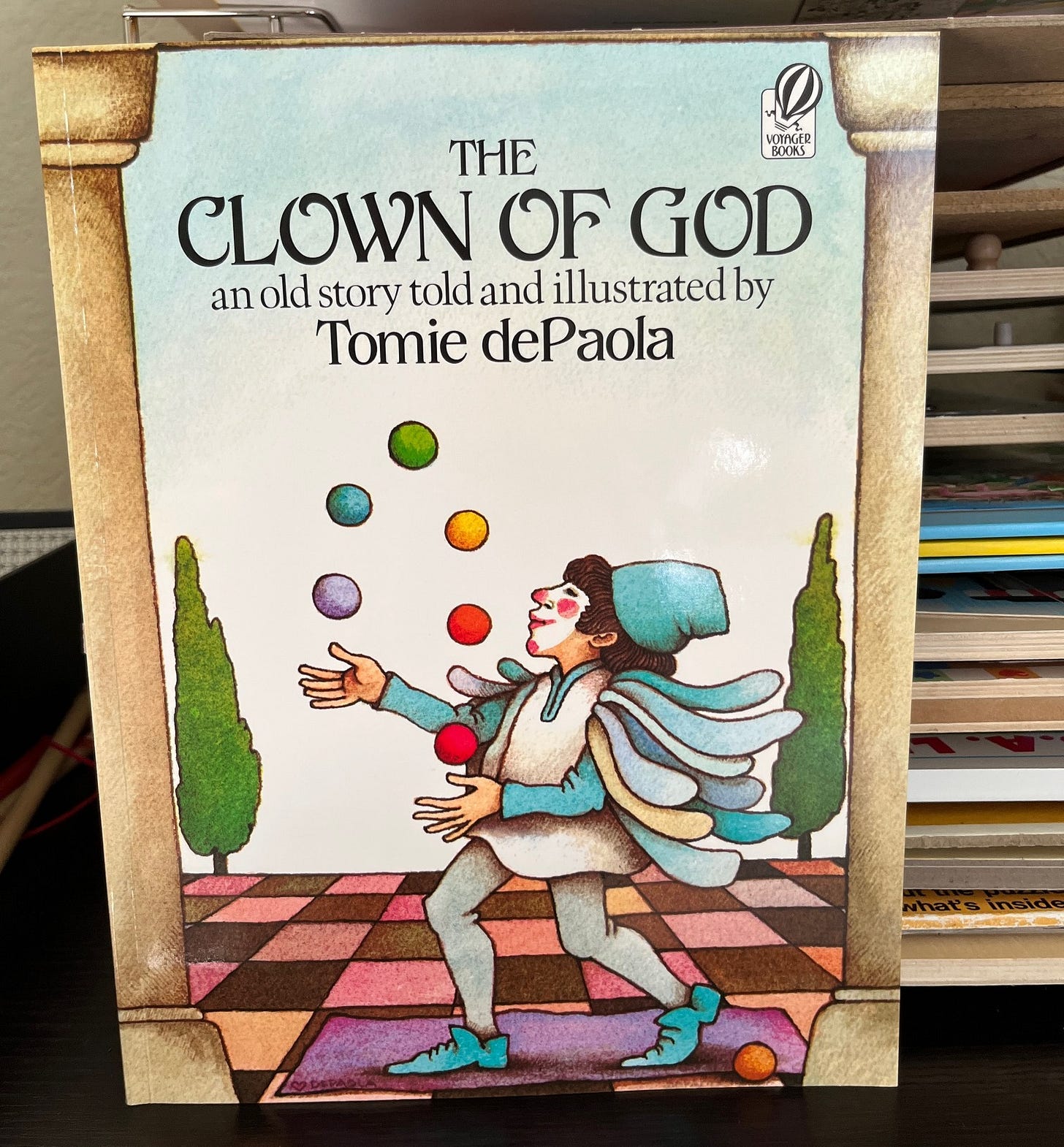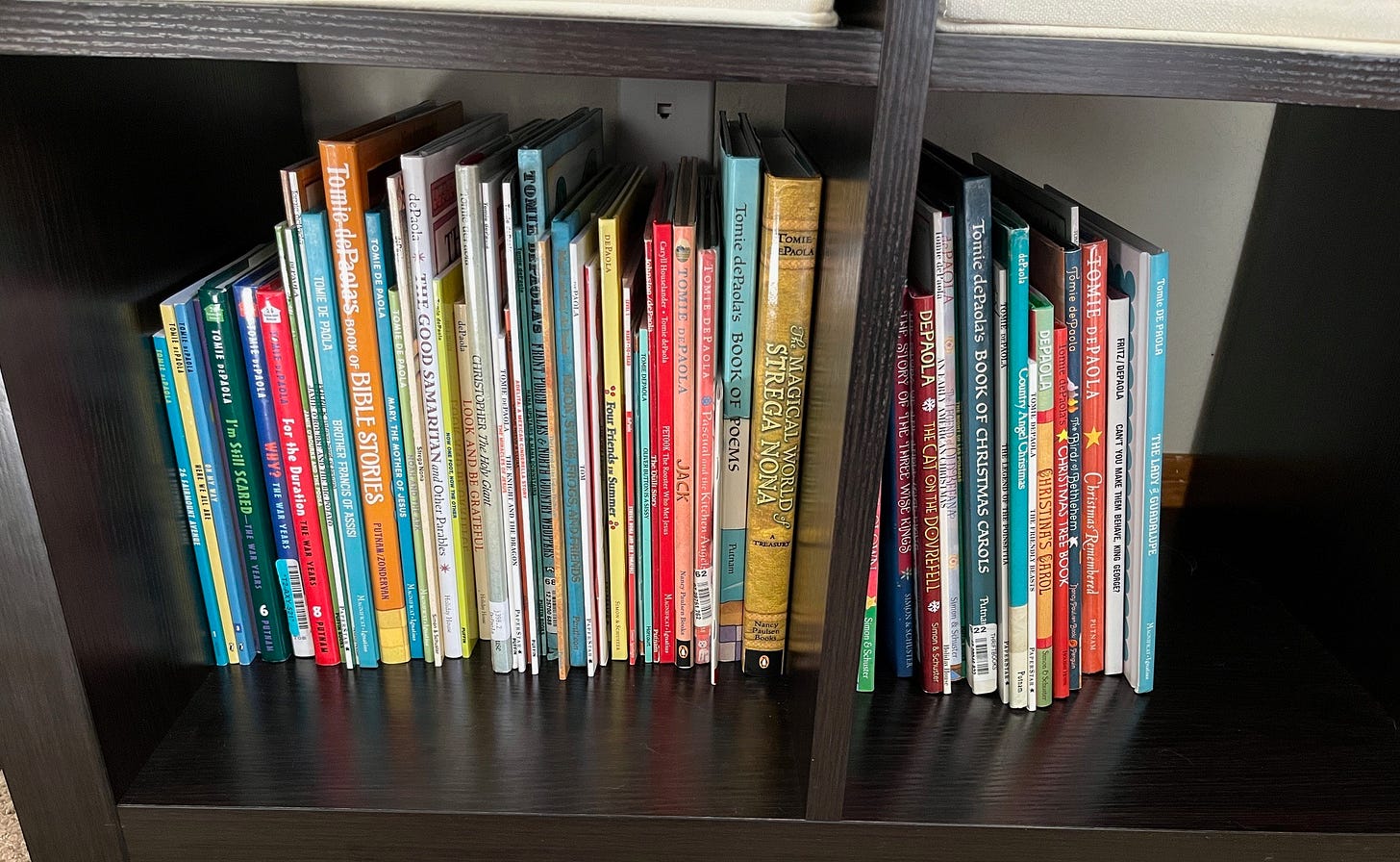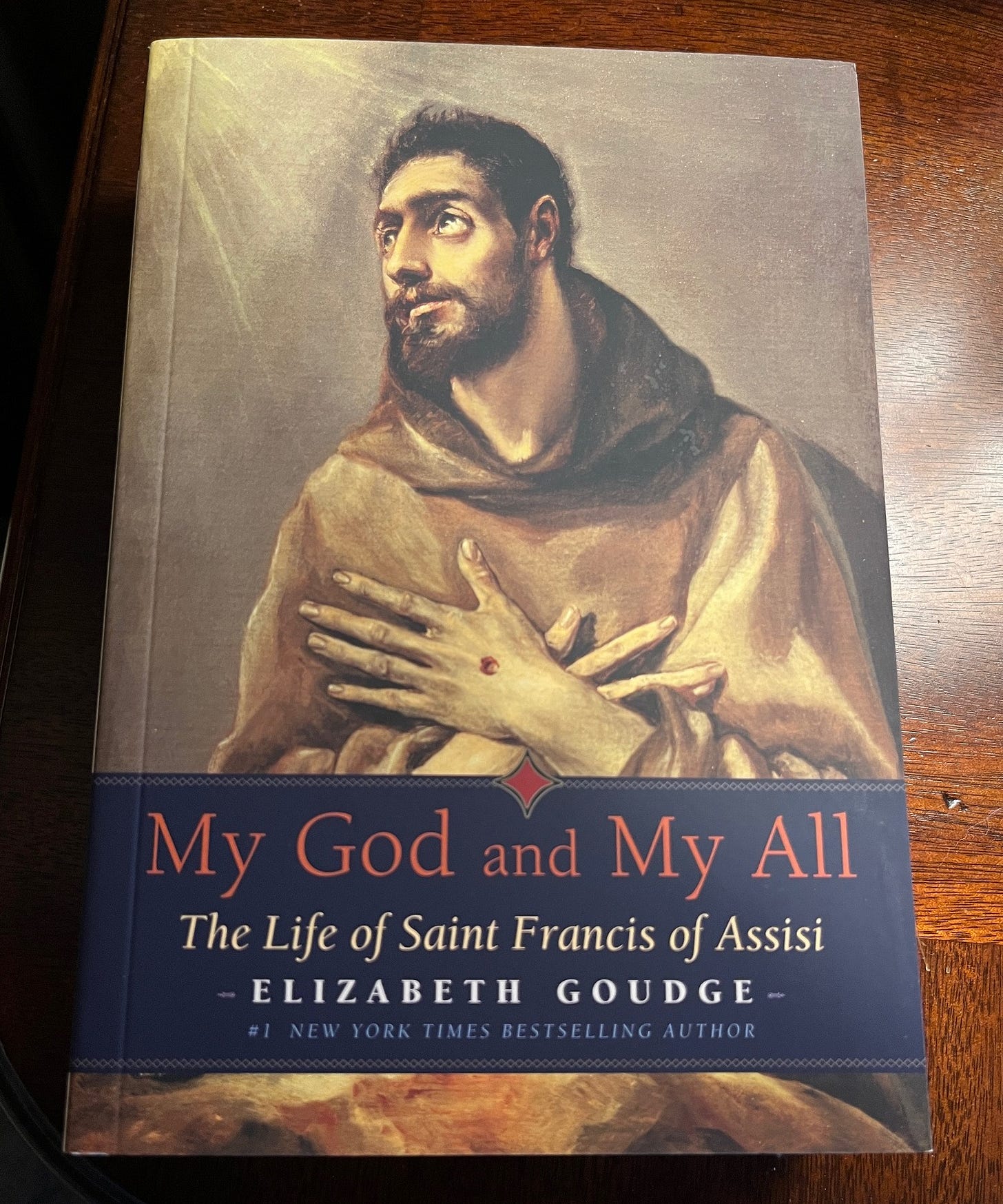There was a time when I did not know who Tomie de Paola was. There were thirty years in fact. This is something I discuss with my children. They ask me with a mix of awe and confusion about how I came across The Clown of God, why I picked it off the shelf, and how it changed my life. This is a story of how it happened.
Warning: Spoilers ahead. If you have not read The Clown of God by Tomie de Paola you really should before continuing. You do not need to read it with a child or children. It is a book for anyone with a soul.
I am fairly certain that the year was 2016. My twins were two and my third son was a baby. I had taken them to the library, probably for story time, and I was browsing the shelves for quality picture books when the title, The Clown of God, caught my eye. A year or two before I had gone on a St. Francis deep dive and my husband accompanied me as we read Chesterton’s book St. Francis of Assisi. We had also watched two movies on his life and discussed them. So when I saw the book’s title, I wondered if there was a connection with the Franciscans. I was pleasantly surprised to see that there was as I flipped through the pages. I did not read the entire book at the time because I was also trying to keep an eye on two toddlers. I added the book to the bag and checked them out.
Within a day or two of getting the book from the library, I called together my twins while their baby brother napped and we read The Clown of God for the first time. I can remember it vividly, sitting on the floor with a toddler on each leg, enjoying the unique illustration style and already wondering why I had never heard of the author/illustrator. I was not ready for the story. It started out simply enough, with an orphan boy named Giovanni who could juggle. He made his way in the world and gained modest fame and acclaim with his routine that did not vary. The repetition of the phrase, “Finally he would toss a red ball and an orange ball. Then a yellow ball. A green, a blue, and a violet ball until it looked as if he were juggling the rainbow. “And now for the Sun in the Heavens!” he would cry,” created a touchstone for the book. It was a delightful image to return to. I didn’t realize how skillfully the phrase gathered emotional weight through the beginning of the story.
The spiritual aspects of the book were also subtle. Just before the halfway point in the book, Giovanni comes across two Franciscan friars and shares his lunch with them. They share with him Brother Francis’ saying that “everything sings of the glory of God. Why, even your juggling.” Giovanni laughs this off, but they continue, “If you give happiness to people, you give glory to God as well.” The story then continues through the juggler’s life journey.
As he ages, Giovanni’s skills diminish and he is once more homeless and destitute. He returns to his hometown and enters the church seeking warmth. He does not realize that it is Christmas Eve. Later that night, the church fills with people bearing gifts that are placed near a statue of the Madonna and Child. Giovanni wants to offer something because the statue of Jesus seems sad, but he has nothing to give. Instead, he dons his juggler’s costume and he performs for the Christ Child. Once again de Paola takes the reader through Giovanni’s routine, this time more slowly. By this point my reading slowed down and I could feel tears filling my eyes. I knew where the story was going. Giovanni gives the greatest performance of his life and adds to the finale, “For You, sweet Child, for You!” and with that he dies. The friars who intended to stop the juggler are surprised to see that the statue’s face has changed into a smile and that he is holding the juggler’s golden ball. By this point, tears were streaming down my face and my twins were asking what was wrong. In truth, nothing was wrong. The story was perfect and that is why I was crying.
From then on, I searched the library shelves for more Tomie de Paola books. When we started using the Five in a Row books I trusted the book recommendations in part because The Clown of God was on the list. When we joined Read Aloud Revival Premium, I found many, many people who were just as enthusiastic about his works. As I have grown our home library, Tomie de Paola has taken high priority. I keep a lookout at library sales and second hand bookshops for new-to-me books and he was so prolific that there are always more to find. He even has his own section in our school room.
The impact on my life is best summed up by my now 11 year old twin boys. They told me one day that if they ever thought that I might be a robot, they would have me read Tomie de Paola books out loud and if I didn’t cry, then I was a robot.1 They truly know me well.
Now that I have revisited The Clown of God with my children this week, I really need to get started on my next Well Read Mom pick of the year…
This situation is based off a SpongeBob SquarePants episode. SpongeBob attempts to determine if Mr. Crabs is a robot by destroying his appliances to see if he would cry since robots can’t cry. My boys thought it would be much easier to verify my humanity.







I can't remember not knowing his books. When I was a kid we had The Legend of the Bluebonnets-- being good Texans. And Nana Upstairs Nana Downstairs. I don't remember when I first read Clown of God. But I always get teary-eyed when I read it to my kids.
I can understand not being ready for the story, having just picked it up randomly off the library shelves! The Clown of God is such a moving book. In some ways it seems like it would be a bit much for a children’s book, but my kids also focus on the beauty rather than the sadness.